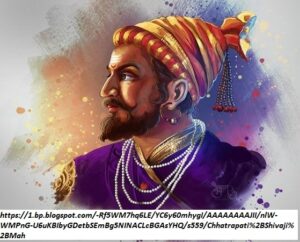How does our awareness of existence (prajñā) affect our actions (karma)?
- Our first awareness (prajñā) is one existence (I am alive/ I exist). We lose this awareness only when we die. Since this cognition is so vital, we constantly strive to reinforce it by building bonds with others. This gives us biofeedback which ensures continuous experience of existentiality. Whenever, we lose this feedback, we experience anxiety (bhaya) and when it is restored, we experience happiness (ānanda).
- Within the bond, we begin transacting, this is action or karma. This transaction results in a stimulus-response or give-take cycle.
What is the impact of conditioning (dharma) on sense of the Self (asmitā)?
- Why do any two entities struggle to relate to each other? The answer is… conditioning or dharma.
- Our conditioning forces us to think in a particular manner.
- So, when we are presented with stimulus, that point of view will either be in congruence or out of congruence with our own point of view/ conditioning (dharma).
- When stimulus is in congruence, we like the entity and try to bring it closer (rāga) and if it is contrary, we dislike the entity and try to push it away (dveṣa), resulting in action (karma).
- Simultaneously, as the duality of like-dislike gets activated, our sense of self-worth (asmitā) experiences expansion when the experience is like (rāga) and contraction when the experience is dislike (dveṣa).
- This experience of like-dislike triggers the attributes (guṇa) to respond.
- Experience of like triggers passion (rajas) and experience of dislike triggers (tamas) because it would require us to alter our conditioning (dharma).
- This resistance to change is universal, all of us resist ideas which do not conform to our conditioning.
- Our resistance to change is proportionate to our perception of threat/ risk associated with the change to our self-worth (asmitā).
- Finally, our conditioning, resistance to change and fear of consequences is based on our sense of existence at any time, in any situation (asmitā).
Patanjali Yoga Sutra (Chapter 2, verse 6) defines asmitā as: perceiving the Self for the truth is asmitā (feeling of being).
How does our self-worth (asmitā) function in a transaction?
As explained above, we depend on the feedback of others for our sense of Identity/ self-worth.
- When others complement us, we feel good.
- Conversely, when we get criticised, the opinion we have of ourselves gets shaken and we struggle to retain a positive image of ourselves. Our sense of self-worth (asmitā) shrinks and we withdraw into a shell.
- The complement or criticism may not be a true reflection of us, but for us, it becomes our reality.
- The factor on which people compare and judge us is their own dharma (natural-state or conditioning) but the tool that we use to evaluate the feedback is our own natural-state or dharma. Obviously, the two are not going to match.
Thus, the cognition of Self or Identity is the foundation of all transactions. Also, it is the quality of this awareness (prajñā) which decides the sensitivity with which we react to our transactions with our environment.
Why is our asmitā or sense of self-worth so fragile?
So, it’s obvious that our sense of worth (asmitā) is dependent for its existence on the quality of its interaction with the environment. Importantly, if no one were to react to us, we would get no feedback. This would result in us feeling isolated, with an experience of deep anxiety of loss of identity (asmitā), akin to fear of death. This is why our sense of self-worth (asmitā) is so fragile.
Some aspects of situational awareness or prajñā.
Our awareness (prajñā) operates at two levels –
- First is our awareness of the situation, also known as vijñāna. This is the awareness of the Self looking out.
- Second is our awareness of the impact of the stimulus on the Self (jñāna). This is awareness of impact of the stimulus on itself.
This means that our identity is dependent on the following rules;
- We exist only if someone acknowledges our existence.
- In order that others acknowledge our existence, we need to interact with them, which means that we need to manifest in order that others recognize our existence.
- The cycle is not closed until we get a feedback, which means that the other person should respond to our stimulus which we should acknowledge. Otherwise, we would not get confirmation of existence and experience loss of sense of Identity.
- This means that existential logic works both ways – until another acknowledges us, we cannot be sure of our existence. Similarly, if we do not acknowledge another’s existence, the other person can never be sure of her or her existence.
According to tantra philosophy, tantra, which means “weave”, is the weave of our identity with our actions. This identity is called Śiva and the manifestation of that identity is called Śakti. When Śiva first manifests with Śakti, the first experience is awareness of its own identity.
However, immediately after manifesting, Śiva tries to find another Śiva for acknowledgement of existence. When this happens, Śiva simultaneously experiences happiness at confirmation of existence (ānanda) and fear of loss of this acquired identity (bhaya). The happiness of acknowledgement of existence is quickly overcome by the fear of loss of this confirmation, forcing the Śiva to latch on to that Śiva and form a bond which it will not leave until it finds a more compatible Śiva.
This transaction accomplishes 2 purposes;
- It confirms the existence of both Śiva-s to themselves and each other.
- During their transactions, each entity perceives its manifestation to be accurate. But this is not true as the manifestation is only as good as the entities state of awareness (prajñā). At the same time, assimilation of manifestation by the recipient is never equal to the manifestation itself because the receiver is always in a different state of awareness. As a result, the feedback that they give, which is received by the manifesting entity as accurate understanding of their reality is never the same as the manifestation itself. This causes a change in asmitā of both, the sender and receiver. Since, both the participants in the transaction are always in a state of perception, this material state of existence is called māyā (illusion/ farce).
Anecdotes, experiences and situations to help understand cognition…

(Wikipedia extract) Battle of Pävankhind was a rear guard battle and last stand that took place on July 13, 1660 at a mountain pass in Maharashtra, India between the Maratha Sardar Baji Prabhu Deshpande and Siddi Masud of Adilshah Sultanate.
The situation: King Sivaji Maharaj, was trapped in Fort Panhala by Adilshahi general Siddi Jauhar along with the Maratha army.
Escape plan: discretely escape and to go to Fort Vishalgad. So, while a diversion was executed, Sivaji Maharaj took selected 600 soldiers with him and quietly escaped the siege.
Noticing this, Siddi Jauhar immediately despatched his son-in-law Siddi Masudin in pursuit with 3000 cavalry.

First, they soon got the diversion palanquin of “Sivaji Maharaj”. However, they found that he was not Sivaji but a barber named “Siva Kashid”! Needless to say, he was immediately executed.
Next, the chase continued and as Sivaji Maharaj neared Ghodkhind, Siddi Masud caught up with the fleeing Marathas.
Ghodkhind is a narrow pass and only a few soldiers can pass through it simultaneously. The Marathas decided to stop the opposing army here.
The battle:
The Marathas divided themselves into two troops of 300 each. Sivaji Maharaj took one troop and proceeded towards Vishalgad. Baji Prabhu Deshpande led the other troop and decided to stand their ground in Ghodkhind to defend the pass until Sivaji Maharaj reach Vishalgad.
Sivaji Maharaj was unaware that Vishalgad itself was being besieged. But, he attacked the siege and broke it. Entering Vishalgad, Sivaji Maharaj quickly fired 3 cannons as a signal to Baji Prabhu Deshpande, who was defending the Ghodkhind that he had reached Vishalgad.
However, by this time, Baji Prabhu and his 300 soldiers had been fighting against 3000 soldiers for over 6 hours. They were all badly wounded and extremely tired. Also, Baji Prabhu was shot and taken to the rear but refused help until he heard the sound of cannons when he breathed his last knowing his king was safe.
Reflect on the state of Self in the battle.
- What makes people perform such sacrifices?
- Shiv Kashid was a barber. When he took the identity of Sivaji Maharaj, what might he have experienced, knowing that his end would not be pleasant?
- What can one reflect on the identities of Siva Kashid, Baji Prabhu and the 300 Maratha warriors knowing that they were facing certain death?
Points to ponder on sense of self-worth (asmitā)
Internal Tags: Conditioning or Dharma, Karma; Principle of action and debt
External Tags: Self-awareness (read about the developmental scales in Self awareness)
- Why do we respond to stimulus?
- How much of any experience do we control?
- Why are other people important? Can you live without interacting with anyone? What will happen?
- What would happen to us if all our efforts to connect with others provoked no reaction?
- How do you experience the feeling of existence? How do you know you are alive?
- What is death? What happens to our identity when we die?
- When relations breakdown, do the debts go away?
- What is perception of reality?


